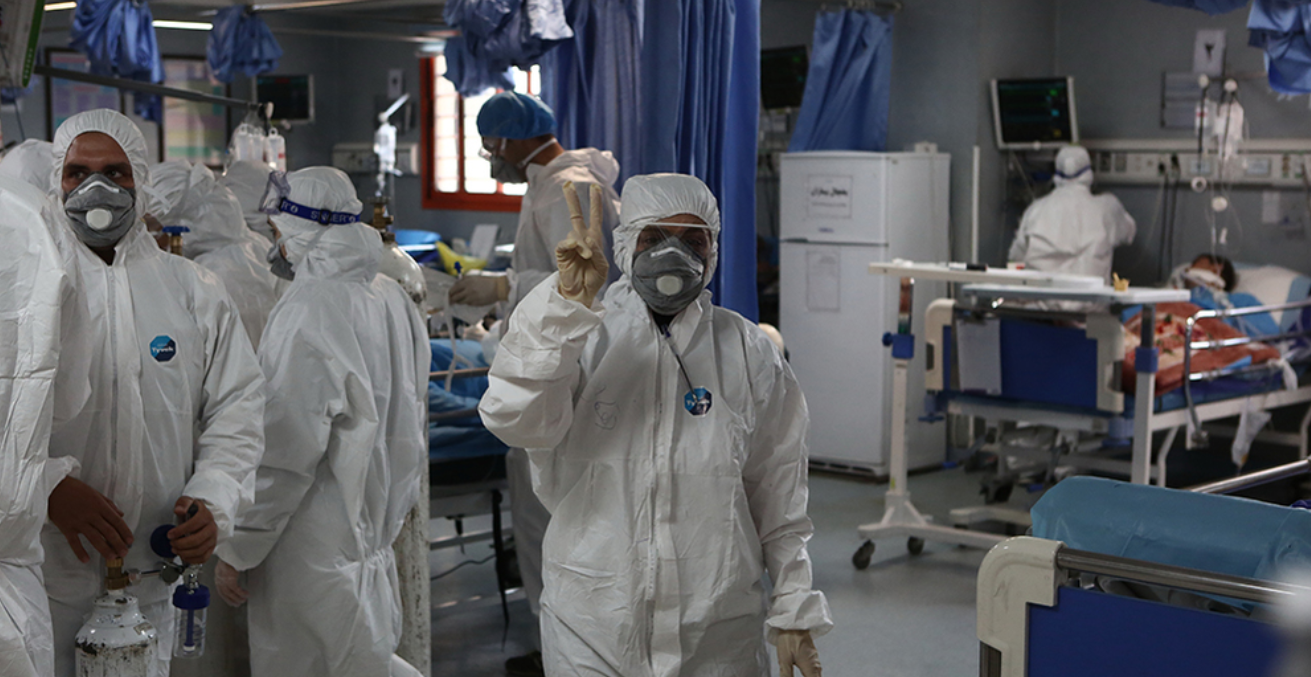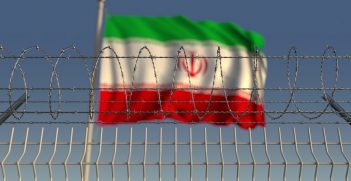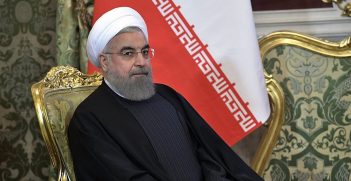Iran in the Shadow of COVID-19 and American Sanctions

The Islamic Republic of Iran is the epicentre of the COVID-19 pandemic in the Middle East. Against the backdrop of severe US sanctions with crippling effects on the country’s economy, the pandemic has savaged Iran.
The virus has caused more human and economic losses in Iran than any other state in the region. Officially, Tehran has so far declared more than 95,000 confirmed cases and over 6,000 deaths. But unofficial reports put the figures much higher. This crisis has intertwined with the ongoing US containment pressures that require the Iranian Islamic regime to make some very difficult policy choices in order to plough through what is a very daunting predicament.
The US sanctions impact Iran’s finance and business dealings with the outside world, including halting the export of Iranian oil — Tehran’s main source of income. Compounding the situation are poor healthcare facilities and shortages of medicine, and a politically pluralist theocratic system of governance that has not functioned well in catering for the public interest.
Yet, despite the devastating effects of both the sanctions and COVID-19 , the Iranian Islamic regime has remained very focused on its national and regional security. Since the start of the pandemic, there has been no let-up in the long-standing mutual animosity with the United States. Nor has there been any substantial reduction in the regime’s support for proxy Shia militias in Iraq, Bashar al-Assad’s regime in Syria, Hezbollah in Lebanon and the Houthis in Yemen. The regime has not found it expedient to deal with President Donald Trump over his cancellation of the landmark July 2015 multilateral Iran nuclear agreement (officially, the Joint Comprehensive Plan of Action – JCPoA) and policy of maximum pressure to tame Iran according to American geopolitical preferences. It has defied and resisted Trump’s measures at all costs.
Tehran-Washington tensions involving proxy conflicts, especially in Iraq, have continued unabated. In the latest episodes, the two sides have accused one another of threatening each other’s navies in the Persian Gulf, with Trump ordering the American Navy to “shoot down” any Iranian vessel that harasses it in the Gulf. There have also been tit-for-tat exchanges between Iran-backed Shia militias and American forces in Iraq.
Meanwhile, the successful launch in late April of a spy satellite into space orbit by Iran’s formidable Islamic Revolutionary Guard Corps (IRGC), which the Trump administration has designated as a “terrorist organisation,” has further irritated Washington. Tehran has described the satellite as “multi-purpose” that expands the IRGC’s “strategic intelligence,” and as a response to Trump’s failed policy towards Iran. US Secretary of State Mike Pompeo has rebuked the development as a further measure by Tehran to beef up its aggressive missile capability. Washington has also blocked Tehran’s request for a $5 billion loan from the International Monetary Fund to cope with the virus’s fallout. Beyond this, Washington is now reportedly preparing a draft resolution for the UN Security Council to reinstate UN sanctions against Iran in support of the US’s withdrawal from the JCPoA, despite the fact that it is no longer a party to the nuclear agreement and its submission is bound to be vetoed by Russia and China.
The prospects for a major US-Iranian confrontation, with the US being backed especially by Israel and Saudi Arabia, remain real. According to a reliable Iraqi source, the US has twice as many troops in Iraq as the 5,200 that it has publicly admitted. Although the Iraqi parliament adopted a non-binding resolution for withdrawal of those troops following the American assassination of Iranian General Qassim Soleimani in early January, Trump has insisted on the continued presence of the troops in Iraq and threatened the Iraqi government with economic devastation if it goes ahead with implementing the resolution. The same Iraqi source claims that US forces remain there to assist Trump with a planned attack on Iran in early 2021, should he be re-elected. If this happens, such a development could easily turn war-torn Iraq into another battle ground and result in an uncontrollable and devastating regional war, given the Iranian determination to retaliate in whatever way possible.
However, once the pandemic has subsided, the Islamic regime may find that it has less resources to carry on business as usual. It may have little choice but to address the combined damage to Iranian society caused by COVID-19 and American sanctions, which had already been the target of protests prior to the advent of the pandemic.
A starting point would be to find a way out of the American sanctions. In this respect, one option would be to renegotiate those items of the JCPoA to which the Trump administration has objected, provided that Washington also lifts some of its draconion sanctions as a prelude to such a renegotiation. This is not an option that would sit well with the conservative clerics in the ruling cluster under Supreme Leader Ayatollah Ali Khamenei. The moderate camp, led by President Hassan Rouhani, has indicated that his administration would be willing to open dialogue with Washington as long as the sanctions are removed.
Another option that follows from the first one would be to retrench Iran’s regional security expenditure, which has grown exorbitant in support of various forces in the Levant, for economic recovery, and structural reforms at home. This measure would have its own difficulties, as the regime’s domestic security is deeply intertwined with that of its regional entanglements. The alternative to these options is a growing gulf and struggle between the state and society with unpredictable consequences for Iran and the region
Amin SaikalAM, FASSA is former Distinguished Professor of Political Science and Middle East specialist at the Australian National University, and author of Iran Rising: The Survival and Future of the Islamic Republic (Princeton University Press, 2019).
This article is published under a Creative Commons Licence and may be republished with attribution.





